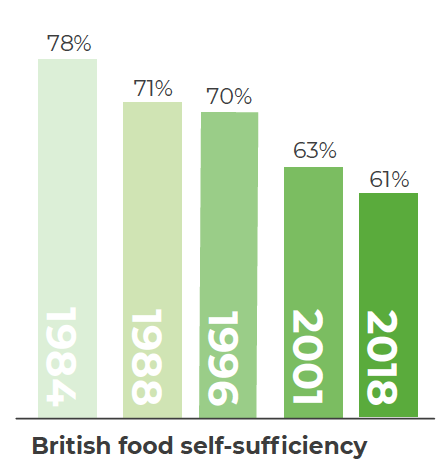Local resource, local produce
We want to produce a higher proportion of our resources locally, including food and energy, and encourage a circular economy.
Opportunities
Central Bedfordshire’s agricultural heritage and institutions such as Cranfield University highlights opportunity for innovation in this sector; to adapt to the changing industry, improve agricultural management, and adapt practices to support national planning policy which calls for gains in biodiversity increase climate resilience.
Technological advances mean that we have the potential to produce and harvest more local produce and energy. Central Bedfordshire Council has already tested how roads could capture and reuse solar, kinetic and thermal energy.
Enhancing education and programming around waste, lifestyles and environmental awareness can help develop habits of reducing, reusing, and recycling materials and food.
Challenges
The UK agriculture sector is heavily reliant on net migration; particularly in attracting workers to areas where there are labour shortages. The potential for more stringent immigration controls could result in a need to fill skills gaps.
Delivering renewable energy generation (such as wind farming) on a mass scale in Central Bedfordshire has implications for the landscape, and affect views of countryside.
Contemporary trends in food, the popularity of “exotic” fruits and vegetables, and the demand for year round produce can limit the feasibility of local food production.
Trends
Local renewable energy
The Council have installed solar panels on council-owned buildings to generate zero-carbon electricity from a renewable source and are looking for opportunities for this to continue. Solar panels at Priory House provide 30% of the buildings’ annual electricity usage. Investment in renewable technology beyond public assets will be important moving forward.
The future of farming
The UN’s Food and Agriculture Organization predicts a 1.1% increase per year in global consumption of agricultural products, which will require a 60% increase in agricultural production to 2050. The farming industry will need to increase its productivity, profitability and resilience in the years beyond Brexit. Central Bedfordshire has specialisms in a number of agricultural sub-sectors including research, experimental food development, and engineering.
Towards a circular economy
In the 25 Year Environment Plan, the Government pledged to leave the environment in a better condition for the next generation. The resultant Resources and Waste Strategy sets out a plan for preserving our material resources by minimising waste, promoting resource efficiency and moving towards a circular economy.
What we heard
“Don’t forget agriculture in the move towards focus industries – agriculture will evolve and remain important!”
“Our agriculture is good for local businesses and jobs and also mean we can punch above our weight in producing
food...”
“We need to address conflict between land for housing and land for agriculture.”







